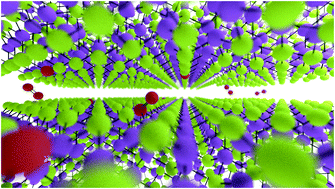The role of traps in the photocurrent generation mechanism in thin InSe photodetectors†
Abstract
Due to the excellent electrical transport properties and optoelectronic performance, thin indium selenide (InSe) has recently attracted attention in the field of 2D semiconducting materials. However, the mechanism behind the photocurrent generation in thin InSe photodetectors remains elusive. Here, we present a set of experiments aimed at explaining the strong scattering in the photoresponsivity values reported in the literature for thin InSe photodetectors. By performing optoelectronic measurements on thin InSe-based photodetectors operated under different environmental conditions we find that the photoresponsivity, the response time and the photocurrent power dependency are strongly correlated in this material. This observation indicates that the photogating effect plays an imporant role in thin InSe flakes, and it is the dominant mechanism in the ultra-high photoresponsivity of pristine InSe devices. In addition, when exposing the pristine InSe photodetectors to the ambient environment we observe a fast and irreversible change in the photoresponse, with a decrease in the photoresponsivity accompanied by an increase of the operating speed. We attribute this photodetector performance change (upon atmospheric exposure) to the decrease in the density of the traps present in InSe, due to the passivation of selenium vacancies by atmospheric oxygen species. This passivation is accompanied by a downward shift of the InSe Fermi level and by a decrease of the Fermi level pinning, which leads to an increase of the Schottky barrier between Au and InSe. Our study reveals the important role of traps induced by defects in tailoring the properties of devices based on 2D materials and offers a controllable route to design and functionalize thin InSe photodetectors to realize devices with either ultrahigh photoresposivity or fast operation speed.

- This article is part of the themed collection: 2020 Materials Horizons most popular articles


 Please wait while we load your content...
Please wait while we load your content...